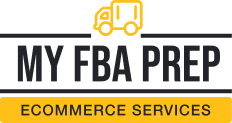
The Seller’s Guide to Amazon Keyword Research

This is a guest post from Lena Einschütz. Lena is the Marketing Manager at BidX, which supports Amazon merchants with software solutions that automate and optimize advertising on and off Amazon.
If you’re an online seller looking to boost your visibility on Amazon, then conducting Amazon keyword research is essential.
By finding profitable keywords, you can improve your rankings on Amazon’s search engine results pages (SERPs), drive more traffic to your products, and boost sales.
Let’s get started!
Why Is the Right Set of Keywords So Important for Amazon Sellers?
Three out of four online shoppers never scroll past the first page of search results. So if your products are ranking low on Amazon’s SERPs, you could be missing out on potential sales.
This is why inputting the right set of keywords is crucial to your success on Amazon. The right keywords can improve your rankings on Amazon’s SERPs, increasing your product’s chances of being seen and purchased by potential customers.
Additionally, Amazon is constantly changing its algorithm, which can impact your rankings over time. By doing Amazon keyword research periodically, as well as making adjustments to your listings and PPC campaigns accordingly, you can keep your products visible and drive long-term sales.
How to Find the Right Keywords for Your Amazon Listing
There are several ways you can conduct keyword research to boost your product’s visibility:
1. Get to Know Your Customers’ Shopping Behaviors
Online marketers use the term “buyer persona” to describe a customer’s needs, wants, and shopping habits. When you know your buyer persona well, you can better understand the types of keywords they’re likely to use when searching for products on Amazon.
To get to know your buyer persona, consider these factors:
- Need: What problem are your customers trying to solve?
- Want: Why would they want to purchase your product?
- Location: Where are they searching from?
- Language: What type of language do they use when searching for products?
- Budget: How much are they willing to spend?
Once you have a good understanding of your target audience, you can then brainstorm the types of keywords they might use when searching for your product on Amazon.
2. Find Keyword Combinations Using the Cluster Method
The “cluster method” is a keyword research technique in which you brainstorm relevant keyword stems and then “branch off” of those stems with a list of related keywords.
Here’s how it works:
First, identify a few keyword stems (or “seeds”) that best describe your product in a straightforward way. For this brainstorming exercise, we recommend that you hold off on using an online keyword tool like Google Keyword Planner to generate ideas. Keyword tools may be useful, but they can also limit your creativity.
Instead, think back to your buyer persona and the questions you have answered about your customer’s needs and wants. What words or phrases come to mind when you think about what your product offers? How does it help your customers solve their pain points?
For example, let’s say your product is a coaster that prevents glasses, cups, and mugs from sticking to it whenever your customer takes a drink (as some plastic-coated coasters are guilty of).
In this case, you might come up with a “non-stick coaster” or “non-slip coaster”.
Note: Amazon’s algorithm typically covers related keyword combinations and individual words, so the non-hyphenated “nonstick” and “nonslip” may also be included in the SERPs.
Once you have identified a few potential keyword stems, it’s time to branch off. Some keyword combinations for Amazon sellers might include the product’s material. For example:
- non-stick coaster ceramic
- non-slip coaster silicone
And some may target a particular use case:
- non-stick coaster for wine glass
- non-stick coaster for cold beverages
- non-slip coaster for cold drinks
As you can see, the cluster method can help you generate a long list of relevant keywords. Once you’ve found them, add them to a spreadsheet so you can track your progress as you optimize your Amazon listings later.
3. Use Online Tools to Find Additional Keyword Combinations
Once you have a list of seed keywords, it’s time to dig deeper and find even more keyword combinations that customers might use when searching for your product.
There are a few different ways you can do this:
Amazon’s Auto-Complete Feature:
Typing a word or phrase into Amazon’s search box will trigger a drop-down menu of suggested keywords based on the platform’s search data.
For example, if you’re selling hiking boots, Amazon’s auto-complete feature might suggest the following keywords and phrases when you start typing “hiking boots” into the search box:
– hiking boots men
– hiking boots women
– hiking boots size 10
– hiking boots waterproof
– hiking boots men waterproof lightweight
Do any of the suggested keywords align with your buyer persona and your product itself? If so, consider incorporating them into your product listings or PPC campaigns.
Research Your Competitors
Do a simple Amazon search for your main keyword stem and take note of the products that appear on the first page of the results. These are your direct competitors.
Next, click on each product listing and take a close look at the keyword section. Notice the product’s title, description, and bullet points (if any). What keywords do your competitors include in their product listings? Are there any combinations that you haven’t thought of yet? If so, add them to your spreadsheet for further consideration.
Use Keyword Research Tools
Keyword research tools provide valuable insights about which keywords are being searched for the most on Amazon (and other websites).
Some keyword research tools that Amazon sellers use include:
- Google Keyword Planner
- SEM Rush
- KW Finder
These tools are especially useful in determining which keywords have “high-volume, low-competition” scores. That is, a lot of people are searching for these keywords, but not many sellers are targeting them in their product listings or PPC campaigns. Therefore, using them on your product page may help you rank higher in the SERPs.
What Are the Different Keyword Types That Amazon Sellers Should Be Aware Of?
When conducting Amazon keyword research, it’s important to understand the main keyword types you’ll encounter. This is especially useful if you plan on running paid campaigns, as the keywords you choose to bid on will determine your ad’s success. Paid ads are especially important because they drive traffic to your product and increase the chances of sales.
Example: If you sell sunglasses and advertise a product with the keyword “sunglasses men”, your ad will appear at the top of the SERP (if you have a certain relevance and make an appropriate bid) if “sunglasses men” has been entered into the Amazon search field.
Keywords for paid ads are separated into different match types. Here’s a quick overview of each match type and how they work:
Exact Match: This search query must match your keyword exactly for your product to appear in the SERPs. For example, if you’re targeting the keyword “non-stick coaster,” your ad will only appear when someone types in that exact phrase or its plural form.
Phrase Match: These keywords must be included in the customer’s search query, but they can appear in any order. For example, the phrase match keyword “non-stick coaster” could trigger your ad to appear for a customer search query like “best non-stick coaster” or “non-stick coaster for cold drinks.” It won’t, however, trigger your ad to appear for a customer search query like “no-stick coaster” (misspelling) or “coasters non-stick” (keywords in the wrong order).
Broad Match: These keywords will trigger your ad to appear for customer search queries that contain all keyword terms or close variations, so words can be in any order and additional words can be included. For example, the broad match keyword “non-stick coaster” could trigger your ad to appear for customer search queries like “ceramic non-stick coasters” or “coasters that don’t stick.”
Manual management of keywords is very complicated and time-consuming, as you need to regularly adjust the bids and move the keywords to the respective match type. For this reason, we recommend a PPC management tool like Bidx, which adjusts the bids for your keywords and match types fully automated based on machine learning algorithms.
How Does Amazon SEO Differ From Google SEO?
If you’re familiar with SEO for Google, you might be wondering how Amazon’s search engine differs. After all, both platforms are essentially search engines, so the basics should be the same, right?
Not quite.
For starters, Amazon ranks products based on:
– The relevancy of a product’s title, bullets, and description to the customer’s search query
– Seller authority (historical sales data, reviews, etc.)
– Click-through rate (the number of clicks the product receives from the SERPs)
– Conversion rate (the number of sales the product generates)
By contrast, Google’s search engine ranks websites based on factors like:
– The quality and quantity of a website’s backlinks
– The relevancy of a website’s content to the customer’s search query
– The website’s domain authority (the higher the score, the higher the ranking)
As you can see, there are some key differences between Amazon and Google SEO. However, the same best practice of optimizing your product page for relevant keywords still applies.
How To Optimize Keywords for Product Listings
To optimize your product listings for Amazon SEO:
Use keyword-rich titles:
Make sure your product’s title includes the main keyword you’re targeting.
Use keyword-rich descriptions:
In the “Product Description” section of your listing, you can include a longer description of your product. As with the title, be sure to use keyword-rich phrases and bullet points to further optimize your listing.
Use “backend” keywords:
Backend keywords can help Amazon’s search engine better understand what your product is about. Because they aren’t visible to customers, they’re also called “hidden” keywords or meta tags. These are typically synonyms, abbreviations, and other related terms that you can add to your listing from your Amazon Seller Central dashboard.
In Conclusion
Amazon keyword research is an essential part of Amazon SEO. By targeting profitable keywords, you can improve your listing’s visibility in search results and increase your chances of making a sale.
Remember to use keyword-rich titles and descriptions, and don’t forget about backend keywords. With some effort, you can optimize your listing for Amazon’s search engine and especially your PPC Ads to drive more traffic (and sales!) to your product page.
If you want to be successful on Amazon, you should optimize your Amazon PPC Ads for maximum visibility. Since this is really time-consuming and you need a lot of expertise, we recommend a PPC Management tool like BidX. BidX continuously analyzes your keywords and bids and adjusts them accordingly, so you can make the most of your money.


